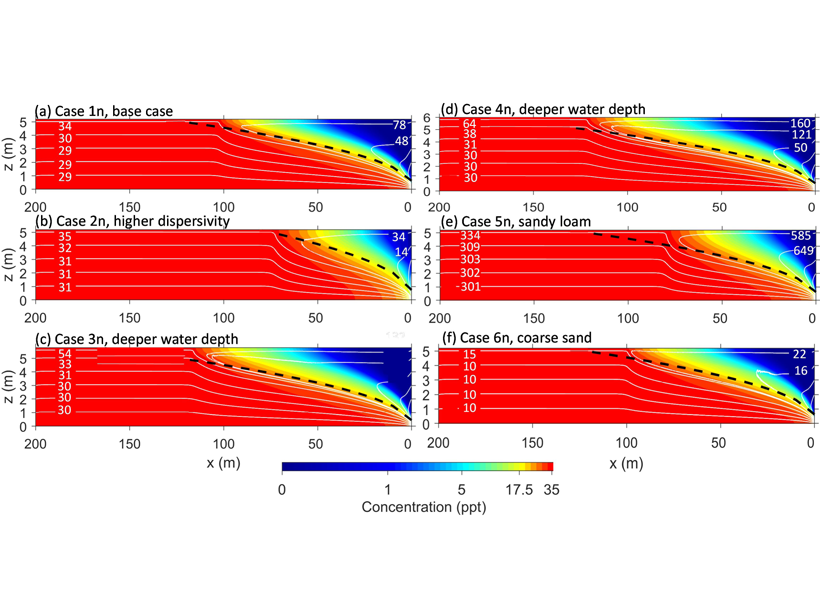Source: Water Resources Research
The exchange of fresh water between a river and its floodplain can be altered by evaporation by lowering the water table and by increasing salt concentration. The rate of evaporation is affected by atmospheric demand for water, which is anticipated to increase with climate warming.
America et al. [2020] use a numerical modeling experiment to quantify the potential relative roles of evaporation, both with- and without salt accumulation, on the development of freshwater lenses and water flow. Within the groundwater aquifer freshwater lens form because saline water is heavier than fresh water, which makes the fresh water relatively buoyant. The results of the numerical study show that floodplain evaporation can alter the spatial distribution of fresh and saline water and potentially lead to locally high groundwater salinity. Moreover, floodplain evaporation changed the direction of water flow so that streams lost water to the floodplain groundwater aquifer.
These results offer compelling hypotheses, testable with field investigations, on how river-floodplain and other groundwater-surface water systems, such as coastal aquifers, could be negatively impacted by increasing evaporation rates as climate warms.
Citation: America, I., Zhang, C., Werner, A. D., & van der Zee, Sjoerd E. A. T. M. [2020]. Evaporation and salt accumulation effects on riparian freshwater lenses. Water Resources Research, 56, e2019WR026380. https://doi.org/10.1029/2019WR026380
—D. Scott Mackay, Editor, Water Resources Research
Text © 2020. The authors. CC BY-NC-ND 3.0
Except where otherwise noted, images are subject to copyright. Any reuse without express permission from the copyright owner is prohibited.

